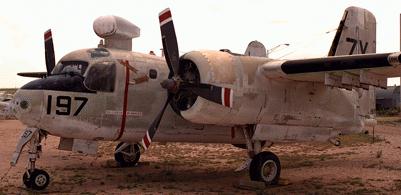IN THE 50's


To start this this section we might as well play a little catch up by listing the base commanders from the first commander through the base commander in 1956. As you can see all the base commanders were regular Navy, so this may show the importance of the air station to the Navy
NAS Grosse Ile Commanders
It was early 1950 and North Korea had invaded the South starting the Korean War. At that time the Naval Air Reserve had 27 air wings stateside. From of these 27 reserve air wings fourteen of their reserve squadrons were ordered to active duty in July 1950, which was increased to 40 within a year.
The Coast Guard stationed rescue boats and 5 men at the site of the seaplane hanger in August 1950. In later years after the Coast Guard closed their operations, the base fire department would operate a crash and rescue boat and air boat out of the same location assuming some of the duties no longer done by the Coast Guard.
October 1, 1950 would see over 200 reservist called to active duty. NAS Grosse Ile personal were going to war again. By 1951 three squadrons had been called to active duty: VP-731, VMF-251 and Marine Ground Intercept Squadron 190, along with many other pilots and specialists.
On 31 July 1952 VP-731 would suffer its first combat loss. The squadron was now based at Iwakuni, Japan. While conducting patrols one of its PBM-5S2 aircraft was attacked by two Chinese MIG-15s over the Yellow Sea. Two crew members were killed and two more seriously injured. Even though the aircraft was seriously damage it was able to make it to Paengyong-do, Korea safely.
Grosse Ile saw the arrival of its first jet fighters in 1951. The base was assigned 6 McDonnell FH-1 Phantoms. These aircraft were not assigned to specific squadrons, but were used to qualify the base fighter pilots in jets.
The Phantom, a forerunner of the Banshee was able to use the runways , but according to some it would not have hurt to have the runways a little longer. But the runways were to short for the higher performance jet fighters. The reservists needed to remain proficient fighter pilots or the base mission would have to be changed. This and the Grosse Ile Township Board resisting any further expansion would change the station mission from a reserve fighter base and eventually force a move and closure of the air station.
1952 saw a change in the tail code from the I of the 40's to the familiar 7Y that would be carried over to NAF Detroit in 1969 when Grosse Ile was decommissioned.
Even though there were no real changes to the physical structure of the base in the 50's there were significant changes to the aircraft and squadron functions. Due to the length of the runways the Corsairs and Maulers were replaced with Skyraiders instead of jets. Squadron missions were changed from fighter to attack and antisubmarine warfare. With these changes the air station had lost a critical battle.
By the mid 50's, the last fighter had shipped out and the pilots had been assigned to attack squadrons flying the AD Skyraiders or patrol squadrons. NASGI had lost a critical battle and it was only a matter of time now.
This is a list of the make up of the assigned squadron in 1956.
|
|
|
|
|
|
|
|
|
|
|
1955 brought a new type of aircraft to the air station. The U.S. Army installed a Nike Ajax guided missile site (D-51) at NASGI 1955. The command center was just north of Meridian Road across from the air station and the launch site was beside the runway just above the old seaplane base that was by now being called "The Boathouse". D-51 would be obsolete by 1962 and removed.
Later in the decade, patrol squadrons got P2V-5 Neptunes. These hybrids were a last chance at jet flight from Grosse Ile. They were powered by two large piston engines and two axial flow jets. These would be the last jets at the air station. Naval Reserve Transport squadrons at NASGI continued flying R4D's until they were replaced by R5D's in January of 1961.
| Late in 1957, Grosse Ile started receiving the Grumman S2F
ASW aircraft. This would be the primary function of the base, to train
for ASW until the stations' closure in 1969.
By 1959 both Navy and Marine reserves were flying helicopters and along with their training function they performed rescue and answered distress calls. |
 |
On Wednesday 16 July 1958 a S2F crashed at 1113 hours. The pilots were LT. Donald Leroy Southworth (buried Boulder, CO.) who was "checking out" LCDR Alan Radford Dale (buried Denver, CO). John B. Harris (an unrated control tower operator) who was on duty in the tower with Gerald Muck, AC2 gave the plane its touch and go clearance at 11:11. If memory serves me right, I believe that AG2 Orin Gahlau gave them their weather brief and signed their local flight plan. It went in behind the white house (later painted yellow) outside of Gate #2 (rear gate) on Groh Road where HM1 Jack Mc Creary lived. There was a reported roar of take off (touch and goes) silence then a mighty impact. The ADC Consigleo who conducted the investigation found the master on the magneto pulled out. The body of one pilot was across and sort of in front of the other as though reaching for it according to the report.
May of 1959 saw the GCA had its 40,000th landing when it guided a Michigan Air National Guard C-47 in for a perfect landing, even though they were not Navy and it's crew was treated appropriately. It would only be a short time and the GCA would again celebrate a milestone with the 50,000th landing.
Copyright © 2000NASGIVM All rights reserved.
Revised: June 30, 2010